Navigation
Install the app
How to install the app on iOS
Follow along with the video below to see how to install our site as a web app on your home screen.

Note: This feature currently requires accessing the site using the built-in Safari browser.
More options
You are using an out of date browser. It may not display this or other websites correctly.
You should upgrade or use an alternative browser.
You should upgrade or use an alternative browser.
Priority mode and auto ISO
- Thread starter slat
- Start date
Derrel
Mr. Rain Cloud
- Joined
- Jul 23, 2009
- Messages
- 48,225
- Reaction score
- 18,941
- Location
- USA
- Website
- www.pbase.com
- Can others edit my Photos
- Photos OK to edit
First off, I seldom use shutter priority, except when in rare instances speed is absolutely critical such as when panning or whenphotographing helicopters or moving subjects like rain, where the shutter speed is critical to the look of the final picture. Second. I shoot a lot in aperture priority, and have for many years., Third, I seldom shoot in a priority mode using automatic ISO.
I like automatic ISO setting in manual mode, where I pick the shutter speed I want or need, and the aperture I want or need, and the ISO runs within a range which I have pre-selected the bottom and top of, in terms of both shutter speed minimum , And ISO upper limit. I really do not like automatic ISO when using either a priority exposure mode, or whenever using electronic flash.
As always, your mileage may vary. Using some of the new ISO invariant sensors from Sony, or Nikon's allow auto ISO in manual mode to be an extremely useful tool. For some subject matter such as birds in flight, auto ISO in manual mode with exposure compensation has become the standard operating procedure of most Accomplished shooters. Prior to ISO invariant sensors , auto ISO was not a really practical, and usable function the way it is today. But with today's modern cameras, we are no longer limited to just the lowest couple of ISO values that our cameras offer.
I like automatic ISO setting in manual mode, where I pick the shutter speed I want or need, and the aperture I want or need, and the ISO runs within a range which I have pre-selected the bottom and top of, in terms of both shutter speed minimum , And ISO upper limit. I really do not like automatic ISO when using either a priority exposure mode, or whenever using electronic flash.
As always, your mileage may vary. Using some of the new ISO invariant sensors from Sony, or Nikon's allow auto ISO in manual mode to be an extremely useful tool. For some subject matter such as birds in flight, auto ISO in manual mode with exposure compensation has become the standard operating procedure of most Accomplished shooters. Prior to ISO invariant sensors , auto ISO was not a really practical, and usable function the way it is today. But with today's modern cameras, we are no longer limited to just the lowest couple of ISO values that our cameras offer.
Last edited:
Dao
No longer a newbie, moving up!
It really depends on situation. There are time you may want to set the ISO to the lowest possible for better result. i.e. Camera on tripod, aperture priority with ISO set at lowest for a after sun set landscape photo in which I may meter the sky and let the camera choose the shutter speed.
However, there are time that I need shoot with manual mode in which I will let the camera choose the ISO. Indoor event, no flash and some action. For that, I set the desire shutter speed to avoid motion blur and wider aperture and let the camera choose the ISO.
So basically, understanding how and why with the Auto settings is the key and choose it wisely and there is no one size fit all case.
However, there are time that I need shoot with manual mode in which I will let the camera choose the ISO. Indoor event, no flash and some action. For that, I set the desire shutter speed to avoid motion blur and wider aperture and let the camera choose the ISO.
So basically, understanding how and why with the Auto settings is the key and choose it wisely and there is no one size fit all case.
Original katomi
Been spending a lot of time on here!
- Joined
- Mar 27, 2019
- Messages
- 3,662
- Reaction score
- 1,708
- Location
- South Coast UK
- Can others edit my Photos
- Photos NOT OK to edit
For me it’s manual iso, then appature or shutter speed depending on what I am doing
Night shoots and macro it’s all manual
Night shoots and macro it’s all manual
RVT1K
Been spending a lot of time on here!
- Joined
- Jan 3, 2019
- Messages
- 1,556
- Reaction score
- 1,159
- Location
- Corozal, Belize
- Can others edit my Photos
- Photos NOT OK to edit
Typically, you would like to use the lowest ISO to get the best color and lowest noise.
But, as you can see, there are many ways to get to where you want to go.
My strategy is usually using aperture priority to get the dof I want and adjust the ISO to get a shutter speed that will work with what I am doing.
But, as you can see, there are many ways to get to where you want to go.
My strategy is usually using aperture priority to get the dof I want and adjust the ISO to get a shutter speed that will work with what I am doing.
ac12
Been spending a lot of time on here!
- Joined
- Dec 5, 2017
- Messages
- 2,637
- Reaction score
- 911
- Location
- SF Bay Area, California, USA
- Can others edit my Photos
- Photos NOT OK to edit
It depends.
There are MANY other variables affect the answer to make a cut and dry statement.
I will use both fixed and auto ISO, depending on the shooting situation, and what I want to do.
Similarly I use and select between P, S, A and M depending on the requirements of the shoot.
The various camera settings are just different tools in the tool box. It is up to you the photographer to select the best tool for the job, to do what YOU want it to do, given the situation at the shoot.
Bottom line, if YOU want to control the ISO level, then go manual. If you want to let the camera control the ISO, then go auto-ISO.
There are MANY other variables affect the answer to make a cut and dry statement.
I will use both fixed and auto ISO, depending on the shooting situation, and what I want to do.
Similarly I use and select between P, S, A and M depending on the requirements of the shoot.
The various camera settings are just different tools in the tool box. It is up to you the photographer to select the best tool for the job, to do what YOU want it to do, given the situation at the shoot.
Bottom line, if YOU want to control the ISO level, then go manual. If you want to let the camera control the ISO, then go auto-ISO.
wfooshee
No longer a newbie, moving up!
- Joined
- Oct 28, 2014
- Messages
- 846
- Reaction score
- 268
- Can others edit my Photos
- Photos OK to edit
I like limiting the variables the camera will work with. I'm also not clear on when the auto-ISO kicks in, and not being clear, I usually avoid it.
What I mean is, say I've got a situation following a subject into an area of less light, shooting shutter-priority. Does the camera adjust aperture, ISO or slide them both, or does it only adjust ISO when it's run out of aperture adjustment? I'm not sure, so I avoid the question by not using auto-ISO.
Sure, I could test and use the EXIF data to find out what the camera did, but I really don't care enough.
Also, even if I did use auto-ISO, I would not want it to auto-select anything over 800, as 1600 is barely usable on my camera, so if I'm already shooting at 400 for good shutter speed, what good is one more stop?
What I mean is, say I've got a situation following a subject into an area of less light, shooting shutter-priority. Does the camera adjust aperture, ISO or slide them both, or does it only adjust ISO when it's run out of aperture adjustment? I'm not sure, so I avoid the question by not using auto-ISO.
Sure, I could test and use the EXIF data to find out what the camera did, but I really don't care enough.
Also, even if I did use auto-ISO, I would not want it to auto-select anything over 800, as 1600 is barely usable on my camera, so if I'm already shooting at 400 for good shutter speed, what good is one more stop?
Derrel
Mr. Rain Cloud
- Joined
- Jul 23, 2009
- Messages
- 48,225
- Reaction score
- 18,941
- Location
- USA
- Website
- www.pbase.com
- Can others edit my Photos
- Photos OK to edit
I like limiting the variables the camera will work with. I'm also not clear on when the auto-ISO kicks in, and not being clear, I usually avoid it.
What I mean is, say I've got a situation following a subject into an area of less light, shooting shutter-priority. Does the camera adjust aperture, ISO or slide them both, or does it only adjust ISO when it's run out of aperture adjustment? I'm not sure, so I avoid the question by not using auto-ISO.
Sure, I could test and use the EXIF data to find out what the camera did, but I really don't care enough.
Also, even if I did use auto-ISO, I would not want it to auto-select anything over 800, as 1600 is barely usable on my camera, so if I'm already shooting at 400 for good shutter speed, what good is one more stop?
It sounds like you might be better off using auto ISO and a manually selected combination of f-stop and shutter speed, and of course in most modern cameras, you set the top ISO level that the system can choose, such as in your case, 800
I get the impression that you have not formulated an actual working plan for you and your camera using auto ISO, and Manual exposure setting. Perhaps you can try using manual exposure mode along with auto ISO setting, and programming in the parameters that are usable for you. For example, at the top I Usually set3200 to 4,000 what is my maximum, top allowable ISO value on the D610 and the D800. At ISO levels higher than 3200-4,000 I'm typically not that thrilled with the output from either of those cameras, except in the most rare of circumstances.
Let's be clear here: automatic setting of the ISO level is not the same thing in older or lower level cameras or in non-ISO invariant cameras, as it is in newer and better and high-performing sensor cameras. For example in my Nikon D2x,t'which I bought in May 2005, the sensor performance is so poor above ISO 160 that auto ISO was ridiculously inappropriate, and I never once have used it , but in the 2007 D3X and the newer D610 and D 800 and other newer models, ISOperformance has improved to a level that was undreamt of only a decade earlier.
Last edited:
JonFZ300
No longer a newbie, moving up!
- Joined
- Jan 4, 2019
- Messages
- 447
- Reaction score
- 273
- Location
- Lynnwood, WA
- Can others edit my Photos
- Photos OK to edit
When using shutter or aperture priority is it better to use auto ISO or select ISO?
What kind of camera do you have?
Derrel
Mr. Rain Cloud
- Joined
- Jul 23, 2009
- Messages
- 48,225
- Reaction score
- 18,941
- Location
- USA
- Website
- www.pbase.com
- Can others edit my Photos
- Photos OK to edit
Usually, we have some set variables that we either 1) need to control,or 2)would like to control. Example : Let's say the 400 meters at most high school stadium/football fields/running tracks...the 400meter race starts in the shade of the stadium's south end. I want to shoot at f/4 at 1/1250 second..So, in Manual Mode, we set AUTO ISO to ON, and it gives us ISO 1,000, and f/4 and 1/1250 second. In 10 seconds, the pack is almost 90 meters down the track, in FULL sunlight...we now have f/4 and 1/1250 second, but ISO drops about 5 EV, to ISO 64...then when the pack enters the stretch at the north end of the stadium, they return to shade..and an exposure that is 5 EV dimmer than the lighted part of the track..but because we are in AUTO ISO, instead of clicking 15, 1/3 stop clicks, the camera INSTANTLY elevates the ISO from 64 to 1,000, in an eye-blink. So we can shoot the last 100 meters at f/4 at 1/1250 at whatever ISO is needed.
ac12
Been spending a lot of time on here!
- Joined
- Dec 5, 2017
- Messages
- 2,637
- Reaction score
- 911
- Location
- SF Bay Area, California, USA
- Can others edit my Photos
- Photos NOT OK to edit
Usually, we have some set variables that we either 1) need to control,or 2)would like to control. Example : Let's say the 400 meters at most high school stadium/football fields/running tracks...the 400meter race starts in the shade of the stadium's south end. I want to shoot at f/4 at 1/1250 second..So, in Manual Mode, we set AUTO ISO to ON, and it gives us ISO 1,000, and f/4 and 1/1250 second. In 10 seconds, the pack is almost 90 meters down the track, in FULL sunlight...we now have f/4 and 1/1250 second, but ISO drops about 5 EV, to ISO 64...then when the pack enters the stretch at the north end of the stadium, they return to shade..and an exposure that is 5 EV dimmer than the lighted part of the track..but because we are in AUTO ISO, instead of clicking 15, 1/3 stop clicks, the camera INSTANTLY elevates the ISO from 64 to 1,000, in an eye-blink. So we can shoot the last 100 meters at f/4 at 1/1250 at whatever ISO is needed.
I have almost this exact situation.
But with football, soccer or lacrosse, and the shadows of the tree going across the field with the setting afternoon sun, with the players running from full sun to full shade and back again.
I am still getting used to using auto-ISO, so it isn't the first thing that I think of.
Derrel
Mr. Rain Cloud
- Joined
- Jul 23, 2009
- Messages
- 48,225
- Reaction score
- 18,941
- Location
- USA
- Website
- www.pbase.com
- Can others edit my Photos
- Photos OK to edit
take note that I am describing how to use automatic ISO adjustment with the shutter speed and the f/stoo having been selected by the user, in Manual exposure mode,but the only thing automatically being adjusted is the ISO level. About a decade ago this concept was pioneered by Pentax,with
a combined AT V mode (Aperture and time value) as I recall. Now that ISO performance is so much better than it used to be this way of shooting,especially in good light, has become smarter than ever. There was a time when noise got so bad and dynamic range got so narrow that anything above the lowest ISO seriously compromised a digital SLR image, but that is no longer the case with the most high performance of cameras that we have today. It is because it is a new way to work, that many people either do not understand or do not trust In this way of shooting photographs.
a combined AT V mode (Aperture and time value) as I recall. Now that ISO performance is so much better than it used to be this way of shooting,especially in good light, has become smarter than ever. There was a time when noise got so bad and dynamic range got so narrow that anything above the lowest ISO seriously compromised a digital SLR image, but that is no longer the case with the most high performance of cameras that we have today. It is because it is a new way to work, that many people either do not understand or do not trust In this way of shooting photographs.
slat
Been spending a lot of time on here!
- Joined
- Oct 1, 2016
- Messages
- 3,452
- Reaction score
- 1,043
- Location
- Missouri
- Can others edit my Photos
- Photos OK to edit
Right now a Canon SL1 but I'm getting ready to buy a Canon 80DWhen using shutter or aperture priority is it better to use auto ISO or select ISO?
What kind of camera do you have?
wfooshee
No longer a newbie, moving up!
- Joined
- Oct 28, 2014
- Messages
- 846
- Reaction score
- 268
- Can others edit my Photos
- Photos OK to edit
I like limiting the variables the camera will work with. I'm also not clear on when the auto-ISO kicks in, and not being clear, I usually avoid it.
What I mean is, say I've got a situation following a subject into an area of less light, shooting shutter-priority. Does the camera adjust aperture, ISO or slide them both, or does it only adjust ISO when it's run out of aperture adjustment? I'm not sure, so I avoid the question by not using auto-ISO.
Sure, I could test and use the EXIF data to find out what the camera did, but I really don't care enough.
Also, even if I did use auto-ISO, I would not want it to auto-select anything over 800, as 1600 is barely usable on my camera, so if I'm already shooting at 400 for good shutter speed, what good is one more stop?
It sounds like you might be better off using auto ISO and a manually selected combination of f-stop and shutter speed, and of course in most modern cameras, you set the top ISO level that the system can choose, such as in your case, 800
I get the impression that you have not formulated an actual working plan for you and your camera using auto ISO, and Manual exposure setting. Perhaps you can try using manual exposure mode along with auto ISO setting, and programming in the parameters that are usable for you. For example, at the top I Usually set3200 to 4,000 what is my maximum, top allowable ISO value on the D610 and the D800. At ISO levels higher than 3200-4,000 I'm typically not that thrilled with the output from either of those cameras, except in the most rare of circumstances.
Let's be clear here: automatic setting of the ISO level is not the same thing in older or lower level cameras or in non-ISO invariant cameras, as it is in newer and better and high-performing sensor cameras. For example in my Nikon D2x,t'which I bought in May 2005, the sensor performance is so poor above ISO 160 that auto ISO was ridiculously inappropriate, and I never once have used it , but in the 2007 D3X and the newer D610 and D 800 and other newer models, ISOperformance has improved to a level that was undreamt of only a decade earlier.
I think my prejudice against auto-ISO comes from shooting film so long. You wanted a different ISO (ASA,) you emptied and reloaded; it wasn't a choice while shooting. That said, I've not found the need to limit my shooting to specific shutter/aperture combinations, thus making ISO my only available adjustment. I'm also pretty much aligned with Ysarex's comments in the thread "The ISO argument" that ISO in a DSLR is not really part of exposure, but rather a metering and rendering adjustment done electronically. Yes, newer cameras do it much better than older ones, but I'd still rather work within shutter speed and aperture than dink with ISO. My own experience is that I sometimes [usually] get better results boosting in post than letting my D7200 shoot with high ISO. I've gotten usable images several times from frames that were black when loaded into the RAW processor in Photoshop. My 7200 is better than my 7000 was, but I still have to apply significant noise filtering even at 800, so until I can move up from that line of camera, high ISO is not something I can use, and auto-ISO doesn't mean much to me.
Derrel
Mr. Rain Cloud
- Joined
- Jul 23, 2009
- Messages
- 48,225
- Reaction score
- 18,941
- Location
- USA
- Website
- www.pbase.com
- Can others edit my Photos
- Photos OK to edit
I AGREE that "ISO in a DSLR is not really part of exposure, but rather a metering and rendering adjustment done electronically." That is true. I prefer to have a more or less "usable" JPEG preview in-camera at the time of shooting, rather than an black rectangle which I recover in post-processing. The best ISO invariant sensors allow one to under-expose 5,6 stops to protect highlights,or to build shutter speed or to compensate for lack of aperture width. and then the recover shadows later, in software.
I was under the impression that your camera had bad noise above 800 ISO, and your original question indicated to me, a lack of complete familiarity with AUTO ISO use, as most experienced shooters use it. It is of course, possible to, as you put it, .... persist in your self-described "prejudice against auto-ISO", which as you state, " comes from shooting film so long." i get that....but now that a 'contact sheet" from a digital shoot might be as many as 700 frames or more, I personally see the value in having a JPEG image that is close to the way the scene looked, as opposed to a black rectangle.
If I need to under-expose a scene a LOT, no worries. But if I need to under-expose a LOT of scenes, so much so that the embedded JPEG preview shows me almost nothing, I think it is worth it to dink around with the ISO. I quit shooting film in 200-, and started using AUTO ISO in 2015.
I was under the impression that your camera had bad noise above 800 ISO, and your original question indicated to me, a lack of complete familiarity with AUTO ISO use, as most experienced shooters use it. It is of course, possible to, as you put it, .... persist in your self-described "prejudice against auto-ISO", which as you state, " comes from shooting film so long." i get that....but now that a 'contact sheet" from a digital shoot might be as many as 700 frames or more, I personally see the value in having a JPEG image that is close to the way the scene looked, as opposed to a black rectangle.
If I need to under-expose a scene a LOT, no worries. But if I need to under-expose a LOT of scenes, so much so that the embedded JPEG preview shows me almost nothing, I think it is worth it to dink around with the ISO. I quit shooting film in 200-, and started using AUTO ISO in 2015.
Similar threads
- Replies
- 24
- Views
- 1K
- Replies
- 3
- Views
- 1K
- Replies
- 16
- Views
- 1K
- Replies
- 3
- Views
- 623


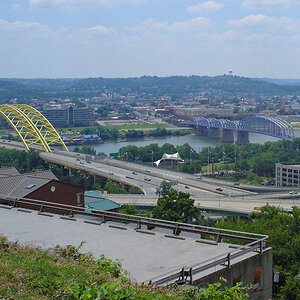
![[No title]](/data/xfmg/thumbnail/32/32704-68982e06c91b163f96186a4eb21d742f.jpg?1619735607)
![[No title]](/data/xfmg/thumbnail/32/32703-dc864e762c9e91088156fdcab4aeea33.jpg?1619735606)
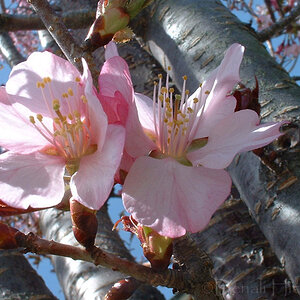
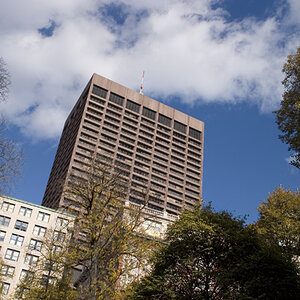
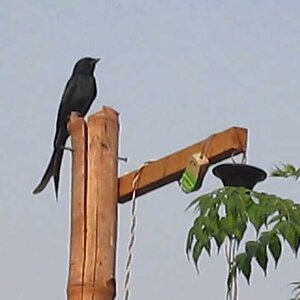
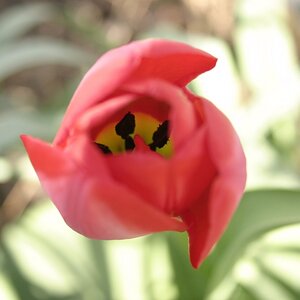
![[No title]](/data/xfmg/thumbnail/37/37129-2b15d9f6bc8d43c2c1247a6c591d14aa.jpg?1619737884)
![[No title]](/data/xfmg/thumbnail/42/42482-3d0e794a92737ca7ecbc8125874457aa.jpg?1619740195)
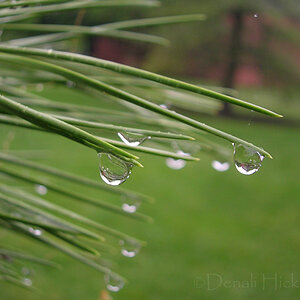
![[No title]](/data/xfmg/thumbnail/37/37606-3c9ffb5906173fa2aa489341967e1468.jpg?1619738148)